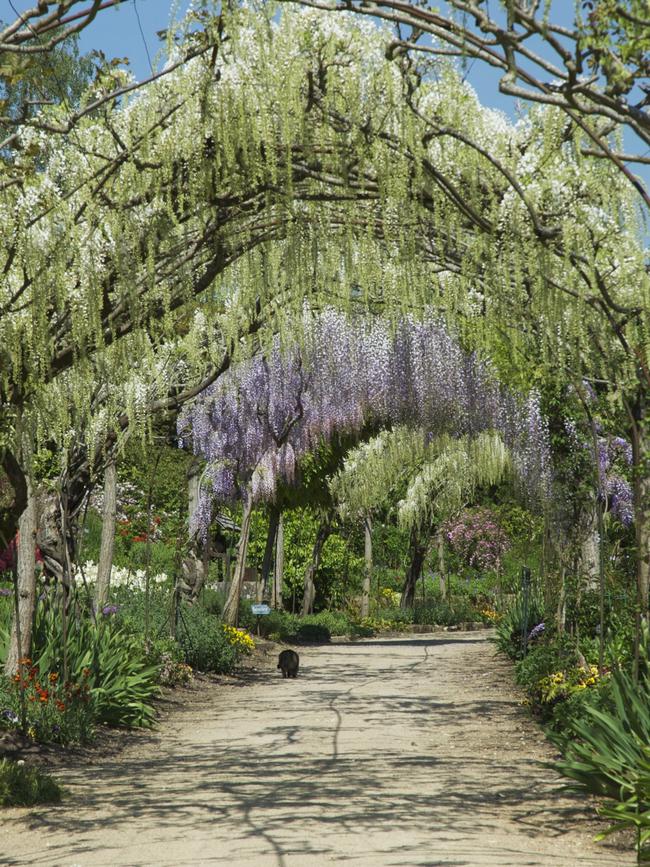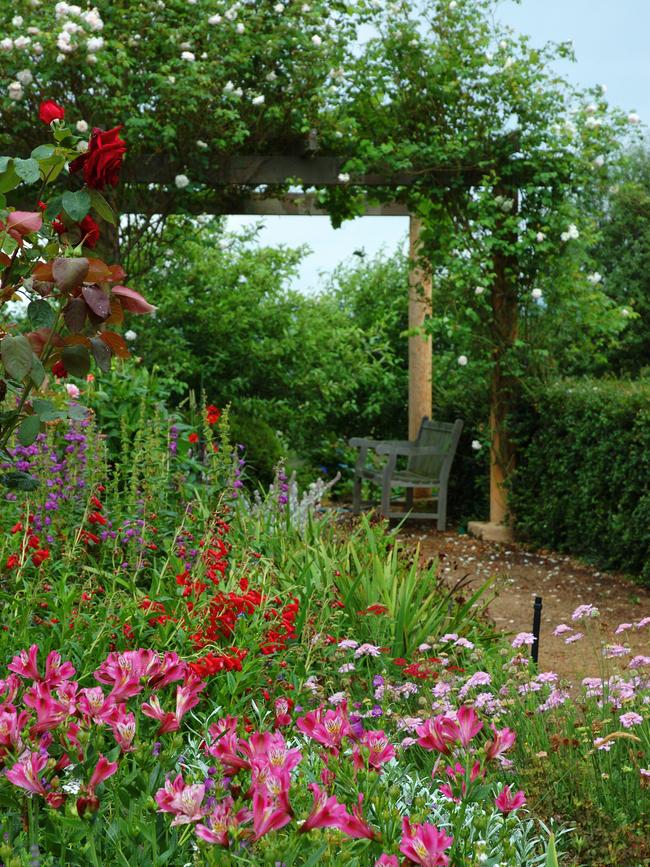Garden arch DIY: Tips to make this stunning feature in your backyard
An arch can make a stunning feature in any garden. Whether you’re after something formal, or a little on the wild side, find out how to DIY.
I MIGHT seem old-fashioned but I don’t reckon a garden is anything without a garden arch or two.
Think of all the wonderful gardens you have seen and I’ll guarantee most of the best contained at least one arch.
I still harbour images of breathtaking wisteria-clad arches, of golden laburnum racemes seemingly dripping from arches, and of rustic arches clothed in glorious roses.
And if it wasn’t an arch showing off these plants then likely it was a pergola or an arbour.
I view arches, arbours and pergolas as coathangers on which to hang all manner of wonderfully rambling, twining, sensuous plants. They can take a garden to new heights.
In country gardens, especially, they can be unforgettable.
MORE
SPACE TO WALL OFF THE WORLD IN YOUR GARDEN
SEEKING BUG BALANCE WHEN CONTROLLING PESTS
BRINGING THE TROPICS TO YOUR BACKYARD
The beauty of an arch is that it can be as complicated or as simple as you like. If it’s to be fully clothed in flowers and foliage then it can be as basic as star pickets driven into the ground either side, with old galvanised iron water pipe bent to form a top, which is wired to the pickets.
Shape the water pipe by bending it around the side of a full corrugated iron water tank. An average handy person can knock one up from leftover building materials in a day or less.
While some regard arches as primarily for formal gardens, they can be just as effective in gardens on the wilder side.
A simple rustic-style arch can be made by stripping and lashing together old tree branches.
If the idea is not an arch fully covered in foliage, something more architecturally appealing is needed.


DIY arches are readily available from garden centres, or for something more elaborate commission a metal worker to weld one up to your own design. There are plenty of striking examples to be found online and in the glossy gardening magazines.
Apart from looking good, arches make brilliant garden frames, directing attention through and to another part of a garden.
Site an arch at the start of a garden path and instantly a visitor’s attention is directed through and along the path, maybe to a fountain or some statuary at the end.
An arch also can separate one garden “room” from another.
String a few of these arches together and you have a garden tunnel that can be the basis for a stunning garden feature, or provide seasonal shade in summer when most needed.
One of the best of these I have ever seen was in the English garden of Barnsley House in the Cotswolds.
Created by the late Rosemary Verey, a guru of garden design, it comprised a rough stone path lined with laburnum trees that in spring produced a mass of cascading, intense yellow flowers.
Underplanted on either side with contrasting giant mauve alliums, it was a stunner.
If you have the space, sun and reasonable soil and good drainage, such a tunnel is quite achievable here.
But a word of warning — if planning an arch or arbour, first ensure what you are growing over it has ideal conditions.
There is little more forlorn looking than a plant struggling for life on an arch.
Likewise, make your arch strong enough for the job.
While that wisteria-clad arch might seem a winner in your mind, wisterias are notorious for growing big and heavy and many a seemingly sturdy arch has been crushed by one.
Similarly, don’t grow a rampant, spreading plant such an Albertine rose over a small arch, unless you’re prepared to devote much of your life to cutting it back.
For the technical-minded, an arch generally comprises a single span, while an arbour is more substantial, often creating an entrance to a section of garden. A pergola, on the other hand, usually features a roof-like grid.


